#Byzantine Priority
Explore tagged Tumblr posts
Text
Debunking Antioch vs. Alexandria: The Truth About Biblical Origins
The tradition of the New Testament does not simply stem from Alexandria and Antioch, and its textual origins go beyond just two traditions. Interpretation and copyist accuracy are not synonymous.
You might have heard the explanation before that all the modern versions come from corrupted Greek texts from Alexandria, Egypt, and therefore, no modern Bible versions should be trusted. Only the King James Version, should be accepted and read by Christians. The theory goes something like: because Alexandria, Egypt was a hotbed of allegorical or heretical interpretations, therefore we shouldn’t…
#Alexandria#Antioch#Arianism#Bible Translation#Byzantine Priority#Byzantine Text#Church History#Dispensationalism#Greek#greek text#Modern Versions#New Testament#Original Languages#Theology
0 notes
Text
Early Islamic Expansion- Colonialism or Conquest?
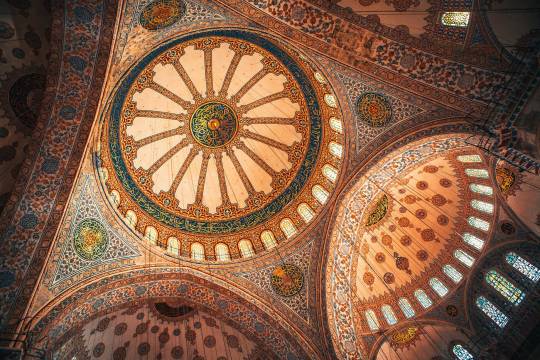
There’s a common narrative among many westerners of how Islam itself in its early days was a coloniser of many peoples and territories. How during its conquests of the 7th and 8th centuries, Islam suppressed the populations and forced upon them a new faith and language, echoing the narrative that its expansionism was strictly conducted by the sword. What was this earth-moving proof that had convinced those who hold this flawed and over-simplified view so deeply?
Firstly, let’s quickly summarise the zeitgeist of the times from a political perspective and then assess what this geographic expansion was and when it all happened. During the life of the Prophet Muhammad, peace be upon him, Western Asia was dominated by two empires that were in a bloody and violent war that had lasted for over eight decades. These two empires were the Byzantine and Sassanian empires. In the Arabian Peninsula, a region that wasn’t included in either’s domain, both intertribal aggression and constant raids were also concurrently rampant. When the fledgling faith became threatened in Medina by its various enemies in the early 7th century, the necessity for defence and thereafter the protection of its believers had to take priority for the Muslim regional minority.
With the Battle of the Trench, the failed attack on Medina by the Quraysh clan and their allies against the Muslims, thus began the eventual conquest of Islam overtaking the entire Arabian Peninsula during the lifetime of the Prophet, peace be upon him, followed by the Rashidun Caliphate. This saw the expansion span from the eastern borders of Persia, Turkey to the north, and Libya to the west. Finally, during the Umayyad Caliphate came the crossing of Islam into Afghanistan and the Indian subcontinent, into the northwestern African lands of the Maghreb, and into the Iberian Peninsula. From 622 to 750 CE, over 120 years, Islam expanded rapidly across three continents.
Now, with this background, we can indulge in the confirmation or repudiation of the element of colonialism in Islam’s conquests. But one more quick digression: let’s define colonialism in simple terms. Colonialism is when one more powerful people invades and occupies another people, usurps their rights and natural resources for the sole purpose of self-interest, like what the British, French, and Spanish empires did to the world from the 15th to the 20th century, as well as what Israel is currently doing in Palestine during the supposedly civilised 20th century.
Beyond the facts, this foundation is how we must establish our conclusions and how we must compare the behaviour of Islam towards those conquered peoples relative to other nations of the time. We can’t expect Islam to behave as per 21st-century standards or even the 20th century. But even we should question that: was Islam actually more humane than even the colonialists of the 20th century?
One would note, when looking at the Islamic expansion and the short duration it took, the accomplishments suggest a speed of success unheard of. It was true that both the Byzantine and Sassanian Empires had fought their way to their eventual collapse over the decades, but still, the number of the Muslims paled in comparison. There are significant factors that played into this dynamic. These empires had shown extreme oppression towards the inhabitants of those occupied regions, while Islam exhibited a tolerance and relatively fair approach to those of other faiths. In general, in most of the conquered nations, the local inhabitants offered no resistance to the invading Muslims as they had little or nothing to lose by the changing of the guard. In some cases, such as in the Levant, Mesopotamia, and Egypt, Islam was a liberator and hence openly welcomed such was the case in the opening of Jerusalem and Jews being allowed to return.
One aspect that differentiated Islamic forces from other preceding victorious armies was that Islam had embedded within its belief system the rules of engagement during warfare, with humanitarian tenets that understood there was to be the protection of women and children and to respect the property and symbols of other faiths. Yes, there were occasions when individuals broke such tenets, but these should be regarded as exceptions.
Was spread by the sword?
This is a narrative originating at the time of the Crusades when the sole ambition was to discredit Islam and give it a barbaric and savage reputation. A common misrepresentation of this narrative was the supposed forced conversions of conquered peoples, whereas the facts suggest that even prior to any imminent military engagement, the Muslim generals would offer the options of conversion to Islam, acceptance of dhimmi status (meaning the payment of an annual jizya tax), or trying their chances at armed conflict. Even upon Muslim victory, the first two options remained available.
The widespread and well-documented dhimmi system that dealt with non-Muslim citizens is proof that no forced conversions took place. There was a structure in place that allowed for religious continuity while also protecting rights with a structure that maintained the retention of physical land and property. Property records show that in the varying lands conquered in the previous Byzantine and Sassanian Empires, Muslims were a small minority during the early Islamic reign, ranging between 10 to 20% of the population up until a century or two after the initial conquest. In certain cases, such as in Iran and Egypt, Muslims as a majority of the population only came into being well into the 9th century. How can that possibly be forced conversion?
Another powerful counterargument for the case against Islamic colonialism is the fact that there was never really any extraction of resources out of the conquered lands and shipped off to Mecca back in Arabia. In actuality, trade and commerce throughout the new Islamic territories blossomed further during Islam’s reign and created a series of powerful cosmopolitan cities across the empire that would eventually become some of the greatest and brightest cities on the planet within the next two centuries: Baghdad, Damascus, Cairo, and Cordoba. Meanwhile, Mecca and Medina, the supposed colonial centres, were humble in their expansion and prosperity for the next millennium and beyond.
A question that can always be asked to further prove this point: would the British ever have moved their capital from London to Delhi?
To exhibit the difference, the capital of the Muslim empire left the Arabian Peninsula with the coming of the Umayyad Caliphate, never to return. Such a decision only reflects that the Islamic empire wasn’t about the benefit of one people, nation, or territory over another, but that a new set of groups of united people, inclusive of those conquered, were now a new nation that had much larger collective aspirations.
One would think that the Islamisation of faith would result in the Arabisation of language, but the reality was the opposite. As the Islamisation of the populations took significant time to materialise, learning the language of the faith, Arabic, was never forced onto others. The fast-paced assimilation of Arabic was principally due to the fact that it was the primary language of trade, governance, and law within the Islamic empires, as well as being a language familiar to the populations of the Levant and Mesopotamia, who were mainly Aramaic speakers.
Arabisation wasn’t about the Muslim faith but was about integrating within a civilisation that was booming not just back in Arabia but everywhere. It became the common language for non-Arabs and non-Muslims to prosper. During the subsequent golden age, thinkers and scholars from across the empire wrote and relayed in Arabic, much in the same way that the English language spread all over the world during the 20th century due to globalisation and technology. Arabic achieved widespread acceptance for the sake of the transfer of knowledge and in aspiring to prosperity.

To learn more about Islam visit: Howtomuslim.org
12 notes
·
View notes
Note
re: that solar and batteries article: absolutely insane that Marist polled people on their priority, economy vs. climate, graphed the results as a bar chart, colored the bar chart blue (the color of capitalism) and green (the color of environmentalism) and then ASSIGNED GREEN TO THE ECONOMY AND BLUE TO THE CLIMATE. Absolutely bananas! (Which are yellow.) (Byzantine tangent goes here.)
i was not aware blue was the color of capitalism. surely it would be a nice classical-liberal/ancap yellow?
24 notes
·
View notes
Text
“The DeFi Game Changer on Solana: Unlocking Unprecedented Opportunities”
Introduction
In the dynamic world of decentralized finance (DeFi), new platforms and innovations are constantly reshaping the landscape. Among these, Solana has emerged as a game-changer, offering unparalleled speed, low costs, and robust scalability. This blog delves into how Solana is revolutionizing DeFi, why it stands out from other blockchain platforms, and what this means for investors, developers, and users.
What is Solana?
Solana is a high-performance blockchain designed to support decentralized applications and cryptocurrencies. Launched in 2020, it addresses some of the most significant challenges in blockchain technology, such as scalability, speed, and high transaction costs. Solana’s architecture allows it to process thousands of transactions per second (TPS) at a fraction of the cost of other platforms.
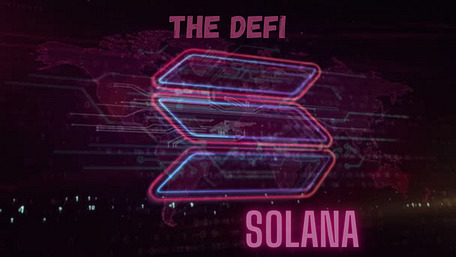
Why Solana is a DeFi Game Changer
1. High-Speed Transactions
One of Solana’s most remarkable features is its transaction speed. Solana can handle over 65,000 transactions per second (TPS), far exceeding the capabilities of many other blockchains, including Ethereum. This high throughput is achieved through its unique Proof of History (PoH) consensus mechanism, which timestamps transactions, allowing them to be processed quickly and efficiently.
2. Low Transaction Fees
Transaction fees on Solana are incredibly low, often less than a fraction of a cent. This affordability is crucial for DeFi applications, where high transaction volumes can lead to significant costs on other platforms. Low fees make Solana accessible to a broader range of users and developers, promoting more widespread adoption of DeFi solutions.
3. Scalability
Solana’s architecture is designed to scale without compromising performance. This scalability ensures that as the number of users and applications on the platform grows, Solana can handle the increased load without experiencing slowdowns or high fees. This feature is essential for DeFi projects that require reliable and consistent performance.
4. Robust Security
Security is a top priority for any blockchain platform, and Solana is no exception. It employs advanced cryptographic techniques to ensure that transactions are secure and tamper-proof. This high level of security is critical for DeFi applications, where the integrity of financial transactions is paramount.
Key Innovations Driving Solana’s Success in DeFi
Proof of History (PoH)
Solana’s Proof of History (PoH) is a novel consensus mechanism that timestamps transactions before they are processed. This method creates a historical record that proves that transactions have occurred in a specific sequence, enhancing the efficiency and speed of the network. PoH reduces the computational burden on validators, allowing Solana to achieve high throughput and low latency.
Tower BFT
Tower Byzantine Fault Tolerance (BFT) is Solana’s implementation of a consensus algorithm designed to maximize speed and security. Tower BFT leverages the synchronized clock provided by PoH to achieve consensus quickly and efficiently. This approach ensures that the network remains secure and resilient, even as it scales.
Sealevel
Sealevel is Solana’s parallel processing engine that enables the simultaneous execution of thousands of smart contracts. Unlike other blockchains, where smart contracts often face bottlenecks due to limited processing capacity, Sealevel ensures that Solana can handle multiple contracts concurrently. This capability is crucial for the development of complex DeFi applications that require high performance and reliability.
Gulf Stream
Gulf Stream is Solana’s mempool-less transaction forwarding protocol. It enables validators to forward transactions to the next set of validators before the current set of transactions is finalized. This feature reduces confirmation times, enhances the network’s efficiency, and supports high transaction throughput.
Solana’s DeFi Ecosystem
Leading DeFi Projects on Solana
Solana’s ecosystem is rapidly expanding, with numerous DeFi projects leveraging its unique features. Some of the leading DeFi projects on Solana include:
Serum: A decentralized exchange (DEX) that offers lightning-fast trading and low transaction fees. Serum is built on Solana and provides a fully on-chain order book, enabling users to trade assets efficiently and securely.
Raydium: An automated market maker (AMM) and liquidity provider built on Solana. Raydium integrates with Serum’s order book, allowing users to access deep liquidity and trade at competitive prices.
Saber: A cross-chain stablecoin exchange that facilitates seamless trading of stablecoins across different blockchains. Saber leverages Solana’s speed and low fees to provide an efficient and cost-effective stablecoin trading experience.
Mango Markets: A decentralized trading platform that combines the features of a DEX and a lending protocol. Mango Markets offers leverage trading, lending, and borrowing, all powered by Solana’s high-speed infrastructure.
The Future of DeFi on Solana
The future of DeFi on Solana looks incredibly promising, with several factors driving its continued growth and success:
Growing Developer Community: Solana’s developer-friendly environment and comprehensive resources attract a growing community of developers. This community is constantly innovating and creating new DeFi applications, contributing to the platform’s vibrant ecosystem.
Strategic Partnerships: Solana has established strategic partnerships with major players in the crypto and tech industries. These partnerships provide additional resources, support, and credibility, driving further adoption of Solana-based DeFi solutions.
Cross-Chain Interoperability: Solana is actively working on cross-chain interoperability, enabling seamless integration with other blockchain networks. This capability will enhance the utility of Solana-based DeFi applications and attract more users to the platform.
Institutional Adoption: As DeFi continues to gain mainstream acceptance, institutional investors are increasingly looking to platforms like Solana. Its high performance, low costs, and robust security make it an attractive option for institutional use cases.
How to Get Started with DeFi on Solana
Step-by-Step Guide
Set Up a Solana Wallet: To interact with DeFi applications on Solana, you’ll need a compatible wallet. Popular options include Phantom, Sollet, and Solflare. These wallets provide a user-friendly interface for managing your SOL tokens and interacting with DeFi protocols.
Purchase SOL Tokens: SOL is the native cryptocurrency of the Solana network. You’ll need SOL tokens to pay for transaction fees and interact with DeFi applications. You can purchase SOL on major cryptocurrency exchanges like Binance, Coinbase, and FTX.
Explore Solana DeFi Projects: Once you have SOL tokens in your wallet, you can start exploring the various DeFi projects on Solana. Visit platforms like Serum, Raydium, Saber, and Mango Markets to see what they offer and how you can benefit from their services.
Provide Liquidity: Many DeFi protocols on Solana offer opportunities to provide liquidity and earn rewards. By depositing your assets into liquidity pools, you can earn a share of the trading fees generated by the protocol.
Participate in Governance: Some Solana-based DeFi projects allow token holders to participate in governance decisions. By staking your tokens and voting on proposals, you can have a say in the future development and direction of the project.
Conclusion
Solana is undoubtedly a game-changer in the DeFi space, offering unparalleled speed, low costs, scalability, and security. Its innovative features and growing ecosystem make it an ideal platform for developers, investors, and users looking to leverage the benefits of decentralized finance. As the DeFi landscape continues to evolve, Solana is well-positioned to lead the charge, unlocking unprecedented opportunities for financial innovation and inclusion.
Whether you’re a developer looking to build the next big DeFi application or an investor seeking high-growth opportunities, Solana offers a compelling and exciting path forward. Dive into the world of Solana and discover how it’s transforming the future of decentralized finance.
#solana#defi#dogecoin#bitcoin#token creation#blockchain#crypto#investment#currency#token generator#defib#digitalcurrency#ethereum
3 notes
·
View notes
Note
Hey Maggie happy DFF! Did John's leaving at the beginning of s1 have anything to do with his relationship with Dean?
Hello China hello!! <3
hmmm I haven't given that any thought before but: I would say yes and no.
I think by that point, John was so far off the road when it came to being a father that Dean was something of an afterthought. Dean was his hunting partner and his life partner -- no getting around that, neither of them really held out much hope for Dean having his own life so long as the YED was still out there -- but everything that said father-and-son was eroded and crumbled and crushed under the weight of the other two. Still there but it wasn't the foremost way that they related to each other except lip service. In fact it had become more convenient for them to downplay it when they were in their motel rooms, or facing down enemies, because the more secret and contained they kept everything, the less chance of it all going to shit.
And John had had twenty-two years of watching things to go shit. As isolated and nomadic as they were, and what with his own fucked-up childhood and the veteran PTSD and then Sam leaving, I'm sure John spent those years gradually locking down a pretty insane worldview and way to operate. Dean needs somebody to be psychotically codependent with and when Sam was gone, it was 100% Dad, and I think John was good with that (it kept Dean in line and kept him safe) until the moments where he wasn't good with it (it made Dean a weak spot).
So when John got a SOLID lead on Azazel, maybe he had a moment of clarity because he could see a potential end to this twenty-year shitshow of constant, endless, exhausting vigilance and failure. The reasons for ghosting Dean would I think be myriad and Byzantine but make sense for John Winchester because his methods of internal resolution pmuch centre Mission Avenge Mary:
Dean would be safer left behind (can also carry on hunting; also would not inconveniently attempt to stop/rescue John from facing down the YED)
This Is Between You and Me, Azazel
the signature JW arrogance in believing he could bring Azazel down best mano a mano without having to factor Dean in
Mary would hate him enough already for how he raised the boys without this final indignity and trespass
he's still raging mad at his own father for ditching but by now has resigned himself to being no better than Henry so hey, abandoning Dean is genetically preordained
at least this way if John died, Sam wouldn't be left alone (...and they could continue the mission)
--etc etc probably a bunch more. So while Dean was partially the reason -- especially if they were sleeping together -- I think John had a number of other reasons that contributed just as much. Dean at that point was a priority as a person in that John wanted to keep him alive, and had a buried rusty hope that Dean might go on living and be sorta happy somehow, but I don't think he was a priority specifically as a son. Not anymore, not till they were all reunited and Sam reminded John what it was like to be their father.
7 notes
·
View notes
Text
well tell me did she make you cry? make you break down? shatter your illusions of love?


hazal filiz kucukkose, 30, she / her, ciswoman — dear all nations, HURREM NARONG NÈE AYDIN has crossed the city borders to edinburgh to the sound of GOLD DUST WOMAN by FLEETWOOD MAC. the SECOND WIFE OF THE KING of THE KHMER EMPIRE is known to be FOR making peace. SHE reminds me of EMERALD GREEN JEWELS and IDYLLIC DREAMS CRUSHED BY ROSE PETALS. however did you know that SHE MARRIED THE KING OF THE KHMER EMPIRE OUT OF SPITE?

BASICS.
name: hurrem narong nee aydin
age: thirty
birthdate: november 18th
titles: queen of the khmer empire
sexuality: bisexual , biromantic
family: mother , father , roxelana aydin ( sister ) , king of the khmer tribe ( husband ) , prince and princesses of the khmer tribe ( sibling in laws )
BIOGRAPHY.
you were born after your sister. the second born, the second daughter. that would become a cruel, ironic theme theme in your life. roxelana was the eldest, the first priority. you were given an equal education, but it always seemed to come after your sister. this is where the resentment started. you knew that it was tradition, what was expected of her.
you don't remember whether your father indulged this rivalry or not. you don't care. you and your sister were sent to the byzantine court, to rub shoulders with some of the most powerful people in the empire. you found your niche, mostly of fellow women and a few powerful men who were close to the emperor. your true goal was the emperor.
but he did not take to you the way that he took the sister. first, you were upset. sad. then you were angry. this only fueled the bitter rivalry that the two of you had. your father, thankfully, had a better offer. the king of the khmer empire, who had recently lost his first wife. you did not go through with the marriage because it was a good alliance, but because it was spite. if roxelana could be a mistress, you could be a queen.
4 notes
·
View notes
Text
1.Jews in Israel mainly classify themselves along a fourfold axis, from least to most observant, hiloni (lit. 'secular'); masorti (lit. 'traditional'); dati (lit. 'religious' or 'orthodox', including religious zionist); and haredi (lit. 'ultra-religious' or 'ultra-orthodox').[6][7]
Israeli law guarantees considerable privileges and freedom to practice for the recognized communities,[8][9] but, in tandem, does not necessarily do so for other faiths. The Pew Research Center has identified Israel as one of the countries that place "high restrictions" on the free exercise of religion[10] and there have been limits placed on non-Orthodox Jewish religious movements, which are unrecognized.[11][12] Pew ranked Israel as fifth globally in terms of "inter-religious tension and violence".[13]
2
Most Jews across the religious spectrum agree in principle that Israel can be both a democracy and a Jewish state. But they are at odds about what should happen, in practice, if democratic decision-making collides with Jewish law (halakha). The vast majority of secular Jews say democratic principles should take precedence over religious law, while a similarly large share of ultra-Orthodox Jews say religious law should take priority.
Even more fundamentally, these groups disagree on what Jewish identity is mainly about: Most of the ultra-Orthodox say “being Jewish” is mainly a matter of religion, while secular Jews tend to say it is mainly a matter of ancestry and/or culture.
3,.Roughly eight-in-ten Israeli Arabs (79%) say there is a lot of discrimination in Israeli society against Muslims, who are by far the biggest of the religious minorities. On this issue, Jews take the opposite view; the vast majority (74%) say they do not see much discrimination against Muslims in Israel.
4.Founded in 1964, the Palestine Liberation Organization is an umbrella organization for groups that represent the Palestinian people before international states.[62] The Palestinian National Authority, officially established in 1994 as a result of the Oslo Accords, is an interim administrative body nominally responsible for governance in Palestinian population centres in the West Bank and the Gaza Strip.[63] Since 1978, the United Nations has observed an annual International Day of Solidarity with the Palestinian People. According to British historian Perry Anderson, it is estimated that half of the population in the Palestinian territories are refugees, and that they have collectively suffered approximately US$300 billion in property losses due to Israeli confiscations, at 2008–2009 prices.[64]
5.The origins of Palestinians are complex and diverse. The region was not originally Arab – its Arabization was a consequence of the gradual inclusion of Palestine within the rapidly expanding Islamic Caliphates established by Arabian tribes and their local allies. Like in other "Arabized" Arab nations, the Arab identity of Palestinians, largely based on linguistic and cultural affiliation, is independent of the existence of any actual Arabian origins.[92]
6.In the 7th century, the Arab Rashiduns conquered the Levant; they were later succeeded by other Arabic-speaking Muslim dynasties, including the Umayyads, Abbasids and the Fatimids.[99] Over the following several centuries, the population of Palestine drastically decreased, from an estimated 1 million during the Roman and Byzantine periods to about 300,000 by the early Ottoman period.[100][101] Over time, much of the existing population adopted Arab culture and language and converted to Islam.[97] The settlement of Arabs before and after the Muslim conquest is thought to have played a role in accelerating the Islamization process.[102][103][104][105] Some scholars suggest that by the arrival of the Crusaders, Palestine was already overwhelmingly Muslim,[106][107] while others claim that it was only after the Crusades that the Christians lost their majority, and that the process of mass Islamization took place much later, perhaps during the Mamluk period.[102][108]
2 notes
·
View notes
Text
Creative Accent Pieces for Your House
With its intricate patterns, vivid colors, and handcrafted appeal, a mosaic side table can transform any space, whether it's your living room, bedroom, patio, or hallway. If you want to add a unique and artistic flair to your home decor, this small yet impactful piece can be used as both a functional piece and a work of art.

A Mosaic Side Table: What Is It?
A mosaic side table is a small table with mosaic patterns on it. Mosaics is an art form in which tiny pieces of colored glass, stone, ceramic, or other materials are put together to create ornamental patterns. These tables frequently have abstract designs, geometric shapes, or floral themes on the tabletop, which adds color and imagination to the space. They come in a range of sizes to meet your needs and can be square, circular, or even hexagonal.
The Allure of Mosaic Architecture
The handcrafted, creative appearance of a mosaic side table is what makes it so appealing. Due to the artisan's personal style and cultural influences, each work is frequently one-of-a-kind. It is simple to use these tables as a room's center point or to combine them with other décor pieces. They are perfect for creating contrast in modern or minimalist spaces because of their striking patterns and textured surfaces.
In addition, the mosaic design is quite resilient in addition to being aesthetically pleasing. Since mosaics' tiny tiles are usually impervious to heat, water, and normal wear, these tables are both fashionable and useful.
A Combination of Modernity and Tradition
Ancient Roman, Byzantine, and Middle Eastern architecture all feature mosaic art, which has been around for thousands of years. You can add a bit of that classic artistry into a modern space by adding a mosaic side table to your house. Mosaic tables of today frequently combine classic methods with contemporary design. Regardless of the style of your room industrial, Mediterranean, or bohemian—there is a mosaic table that will either blend in or stick out.
Flexibility in Interior Design
A mosaic side table's adaptability is one of its greatest benefits. Here are a few inventive ideas to use it in your home:
1. Accent piece for the living room
Put your mosaic side table as a focal point next to a couch or armchair. It's ideal for storing remote controls, coffee, or a chic table lamp. The vibrant mosaic top instantly draws the eye and unifies other room design components.
2. A Partner in the Bedroom
Use it next to your bed as a nightstand. Your bedroom's decor can be made cozier and more unique with the textured top and creative design. Combine it with a stack of your favorite books and a reading lamp to create a peaceful nocturnal retreat.
3. Outdoor Style
Patios, balconies, and outdoor seating areas look great with mosaic side tables. They can tolerate outside circumstances because many are constructed from weather-resistant materials. A table with vibrant colors may liven up a boring outdoor space.
4. Statement of Entry
Put a mosaic side table in your entrance or foyer to create a striking first impression. It can be used to showcase a bowl for keys and small objects, a sculpture, or a vase of fresh flowers. In addition to fulfilling a functional need, it gives the house a cozy, creative feel.
Selecting an Appropriate Mosaic Side Table
Take into account the following while choosing the perfect mosaic side table for your house:
Size: Make sure it blends in with the other furnishings in your room.
Color scheme: Pick hues that complement or draw attention to the décor you already have.
Material: Stone, metal, glass, and ceramic are typical materials. Verify if it is appropriate for the desired setting (indoor vs. outdoor).
Style: Do you prefer a contemporary geometric design or a classic Mediterranean aesthetic? Your overall style should be reflected in the table.
Consider the amount of use the table will receive as well. Its visual design may be given priority if its main purpose is decoration. Choose something more robust and useful if it will be used frequently.
Upkeep and Attention
Maintaining your mosaic side table is not too difficult. It should remain immaculate with routine cleaning and the odd wipe down with a moist cloth. It's a good idea to periodically reseal the surface of tables with grout to avoid discoloration or moisture damage, especially for outdoor items.
Steer clear of abrasive cleansers and aggressive chemicals as they can harm the tiles or finish. Maintaining the durability and aesthetic appeal of your mosaic piece only requires a little attention.
Where to Look for the Greatest Items
Numerous mosaic side tables are available in furniture stores, artisan fairs, internet merchants, and home décor boutiques. On websites like Etsy, where you can find unique items created by talented artisans from all over the world, handmade options are particularly well-liked.
You may even attempt making your own mosaic side table if you enjoy do-it-yourself crafts. Adhesive, tiles, grout, and a simple table are all you need. This enables you to completely alter the size, color, and design to suit your preferences.
Conclusion
In addition to being a piece of furniture, a mosaic side table is an artwork, a conversation starter, and a piece of history. It can immediately improve any home or outdoor space with its harmonious combination of beauty and functionality. A mosaic side table is the ideal addition to any room, whether your goal is to create an artistic statement, a touch of history, or a pop of color.
#furnishings#interior decorating#interiorstyling#furniture#home interior#interior design#home decor#home renovation#home decoartion
0 notes
Text
Exploring Istanbul's Must-See Landmarks
Discover Istanbul's rich history and vibrant culture through its must-see landmarks, including iconic sites like Hagia Sophia, Topkapi Palace, and the bustling Grand Bazaar, offering unforgettable experiences for every traveler
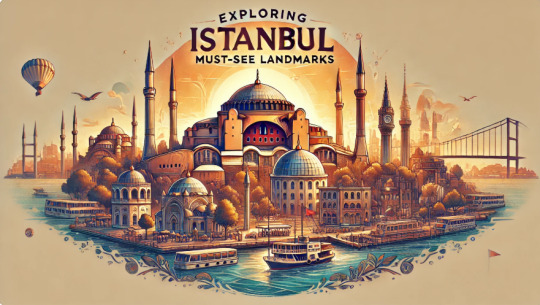
Craving an unforgettable adventure? Look no further than Istanbul, the captivating city that bridges Europe and Asia. With its rich history, vibrant culture, and stunning architecture, Istanbul is a must-visit destination for any traveller. Whether you're a history buff, a foodie, or simply seeking a unique experience, this cosmopolitan city has something to offer everyone. Get ready to be enchanted by Istanbul's allure and discover why it's quickly becoming one of the world's most sought-a
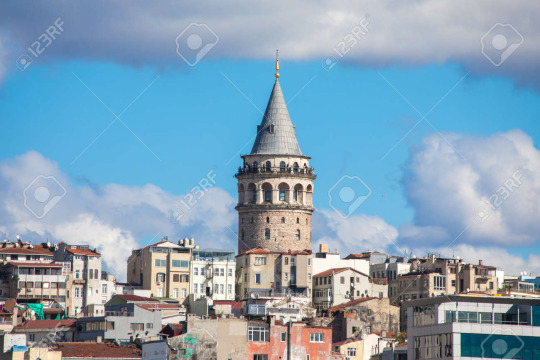
Explore these must-see places and activities to make the most of your Istanbul adventure.
Purchase an Istanbul Tourist Pass!

Tired of the hassle of buying individual tickets for each attraction in Istanbul? Look no further than the Istanbul Tourist Pass! This handy little card is your golden ticket to exploring the city's top sights without breaking the bank.
What does the pass offer?
Free entry: Access to over 100 popular attractions, including historical landmarks, museums, and cultural sites.
Flexibility: Choose a pass for 1 to 10 days to suit your travel plans.
VIP treatment: Skip the lines and enjoy priority access to many attractions.
Digital convenience: No need for paper tickets. Simply scan your phone to enter.
Transportation discounts: Some passes offer discounts on public transportation for added convenience.
Istanbul, Turkey, is a captivating blend of history, culture, and modernity. From the iconic Hagia Sophia to the bustling Grand Bazaar, the city offers endless exploration. When you visit Turkey Istanbul, immerse yourself in its vibrant streets, savor traditional Turkish cuisine, and witness stunning Bosphorus views for an unforgettable experience.
So, what are you waiting for? Grab an Istanbul Tourist Pass and start exploring this vibrant city like a local!
Visit Hagia Sophia: A Timeless Marvel of Istanbul
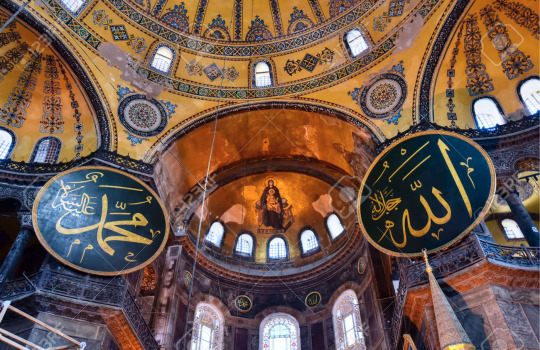
Hagia Sophia is undoubtedly one of the most iconic landmarks in Istanbul. This magnificent structure has witnessed centuries of history, serving as both a church and a mosque over the years.
Originally built in 360 AD, Hagia Sophia has undergone several reconstructions. The current building dates back to the 6th century and is a testament to Byzantine architectural brilliance. It served as a Greek Orthodox cathedral for nearly 900 years before being converted into a mosque during the Ottoman Empire. In 1934, it was transformed into a museum, attracting visitors from around the world.
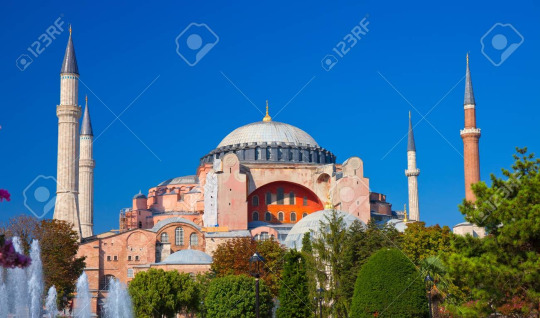
In 2020, a significant decision was made to reconvert Hagia Sophia into a mosque. This means that anyone, regardless of religion, can now visit and explore this historic site free of charge. While there may be temporary closures during prayer times, the mosque remains open to the public for most of the day.
Plan Your Visit:
Opening hours: Hagia Sophia is open daily from 9 AM to 10 PM.
Entrance fee: There is no longer an entrance fee as it is now a mosque.
The Blue Mosque: A Stunning Ottoman Gem
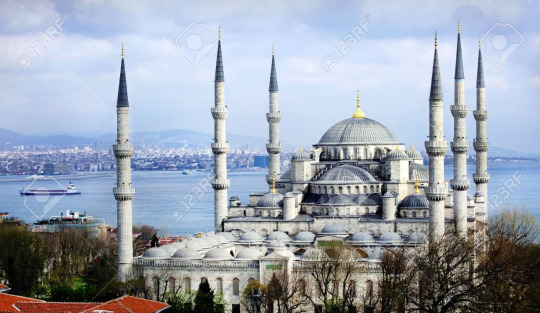
The Blue Mosque is a breathtaking example of Ottoman architecture and one of Istanbul's most popular tourist attractions. Known for its six minarets, this mosque continues to serve as an active place of worship and welcomes visitors worldwide.
Built between 1609 and 1616, the Blue Mosque is renowned for its intricate Iznik tiles, which give the interior its signature blue hue. Despite its popularity with tourists, it remains a functioning mosque, adhering to daily prayer times.
Tips for Visiting:
Opening hours: The mosque typically opens around 8:30 AM and closes for approximately 30 minutes during prayer times. Check the exact schedule posted outside the mosque.
Dress code: Adhere to a modest dress code. Women should cover their shoulders and knees. If you forget to bring a scarf, you can rent one from the kiosk in the garden.
Guided tours: Consider a guided tour, especially if you have an Istanbul Tourist Pass, to learn more about the mosque's history and architecture.
The Grand Bazaar: A Shopper's Paradise
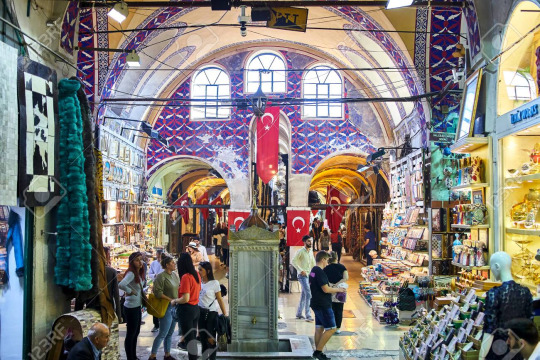
The Grand Bazaar, or "Kapalıçarşı," is a must-visit destination for any traveller in Istanbul. This historic marketplace offers a unique shopping experience with diverse goods and a captivating atmosphere.
Founded in the 15th century by Sultan Mehmed II, the Grand Bazaar has witnessed centuries of trade and commerce. Despite facing various challenges, including fires and earthquakes, it has endured and grown into one of the world's largest covered markets.
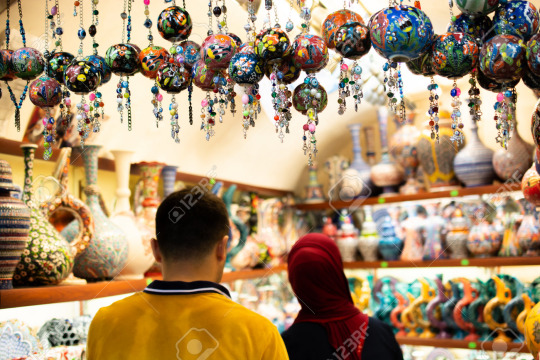
A Shopper's Dream:
With over 4,000 shops across 61 streets, the Grand Bazaar is a treasure trove for shoppers. From traditional Turkish handicrafts to modern-day souvenirs, you'll find something to suit every taste and budget.
Plan Your Visit:
Opening hours: The Grand Bazaar is open daily from 8:30 AM to 7 PM, except on Sundays and the first day of religious holidays.
Entrance fee: There is no entrance fee to the Grand Bazaar.
Ortaköy Mosque
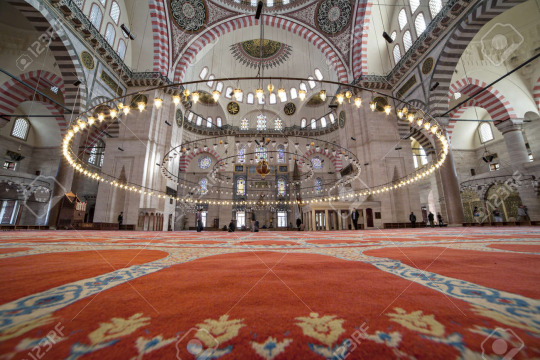
Ortaköy Mosque is a stunning architectural gem nestled along the Bosphorus Strait. Its unique design and picturesque location make it a must-visit for any traveller in Istanbul.
Designed by the same architect behind the renowned Dolmabahçe Palace, Ortaköy Mosque boasts a striking neo-Baroque style. Its white exterior and elegant minarets stand out against the backdrop of the Bosphorus.
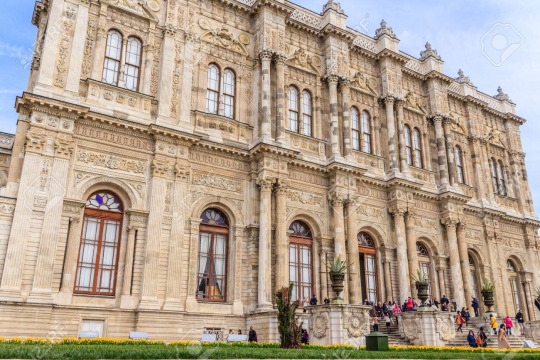
A Perfect Sunset Spot:
The mosque's location offers breathtaking views of the Bosphorus Bridge and the surrounding cityscape. It's an ideal spot to enjoy a leisurely stroll and watch the sunset over the water.
Ortaköy is a charming neighbourhood that has been transformed from a sleepy fishing village into a bustling hub of nightlife and dining. Discover trendy cafes, chic boutiques, and lively bars in the area.
Plan Your Visit:
Opening hours: Ortaköy Mosque is open daily from 4 AM to 10 PM.
Sura Hagia Sophia Hotel: Your Istanbul Oasis
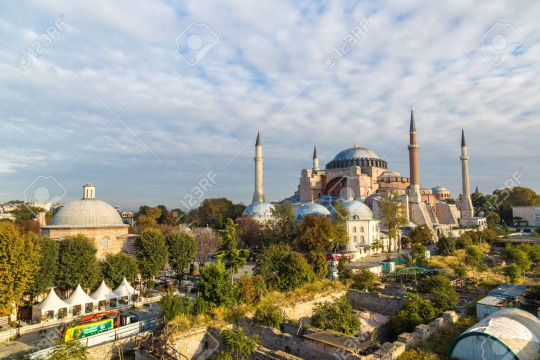
Sura Hagia Sophia Hotel is a luxurious haven nestled in the heart of Sultanahmet. It offers breathtaking views of Istanbul's iconic landmarks. With its historic charm and modern amenities, this hotel is the perfect choice for travellers seeking a memorable stay.
A Dreamy Location:
Nestled in the Sultanahmet district, the hotel offers stunning views of the Hagia Sophia and other historical sites. Its prime location puts you within walking distance of popular attractions like Sultanahmet Square, Topkapi Palace, and the Grand Bazaar.

Luxurious Accommodations:
With 222 rooms, each designed in a unique style, the Sura Hagia Sophia offers a variety of accommodation options to suit your preferences. Indulge in the opulence of Ottoman palaces with a visit to the hotel's historical Ottoman Bath.
After a day of exploring the city, unwind at the Spa Soul, offering a range of relaxing treatments and massages.
Whether travelling solo, as a couple, or with family, the Sura Hagia Sophia Hotel provides a comfortable and unforgettable stay. Its prime location, luxurious amenities, and historical charm make it an ideal choice for those seeking to immerse themselves in Istanbul's rich culture.
Dolmabahçe Palace: A Symbol of Ottoman Opulence
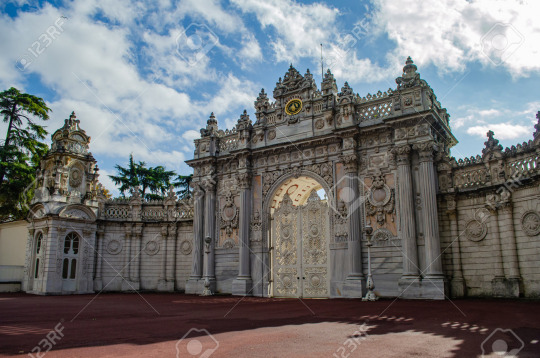
Dolmabahçe Palace is a stunning architectural masterpiece showcasing the Ottoman Empire's grandeur. Built in the European style, this palace was commissioned by Sultan Abdül Mecit in the 19th century.
Despite its opulent appearance, the palace's construction was motivated by a desire to mask the decline of the Ottoman Empire. With its 285 rooms, 44 halls, and numerous bathrooms, Dolmabahçe Palace is a testament to the empire's former glory.
To ensure a memorable visit, arrive early in the morning as the palace has a daily visitor limit of 3,000. Consider purchasing tickets online in advance to avoid long queues.
Opening hours: 9 AM to 5:30 PM (closed on Mondays)
Entrance fee: 650TRY (includes audio guide) Or included in the Istanbul Tourist Pass.
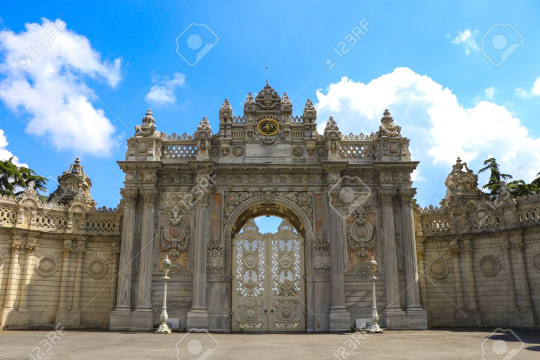
Explore the Palace:
Start your visit by exploring the beautiful Palace Gardens, where you can take photos and enjoy the peaceful surroundings. Inside the palace, admire the intricate details of the interior and learn about the history of the Ottoman Empire.
Galata Tower: A Timeless Icon of Istanbul
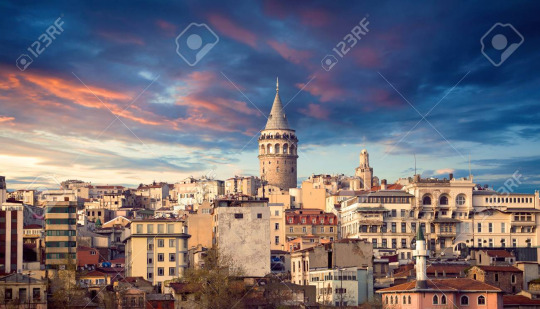
Galata Tower is a historic landmark that has stood tall over Istanbul for centuries. Originally built as a watchtower, it has served various purposes throughout its history, from prison to observatory.
Today, Galata Tower offers visitors breathtaking views of the city's skyline. Climb to the top and admire the stunning panorama of the Golden Horn, the Bosphorus Strait, and the historic Sultanahmet district.
With its rich history and architectural significance, Galata Tower is a must-visit attraction for anyone exploring Istanbul.
Opening hours: 8:30 AM to 11 PM
Entrance fee: 650TRY (or included in the Istanbul Tourist Pass)
Balat: A Vibrant Neighborhood of Colors and History

Balat is a charming district in Istanbul known for its colourful houses, cobblestone streets, and diverse religious heritage.
A Kaleidoscope of Colors:
Balat's most striking feature is its vibrant array of colours. The district's historic wooden houses, many of which date back centuries, are painted in various hues, creating a picturesque scene.
Balat has a rich cultural heritage, combining synagogues, mosques, and churches. This diversity reflects the district's history as a home to various minority groups.

In recent years, Balat has become a popular destination for young locals and tourists. The district is now home to trendy cafes, bars, and shops, offering a vibrant atmosphere.
Take your time to wander through Balat's narrow streets, exploring its hidden gems and admiring the colourful architecture. Be prepared for some steep inclines, but the views and unique atmosphere are well worth the effort.
Suleymaniye Mosque: A Monument to Ottoman Grandeur
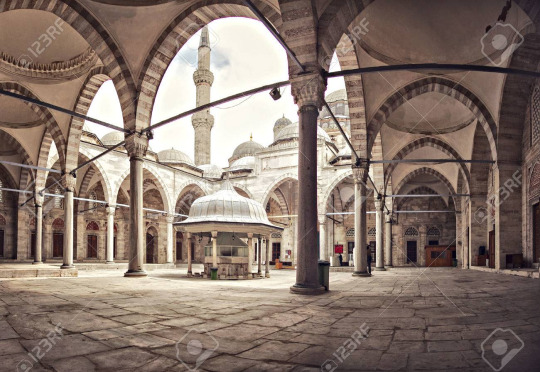
Suleymaniye Mosque stands proudly atop Istanbul's third hill, a testament to the Ottoman Empire's architectural mastery. This magnificent mosque was commissioned by Sultan Suleiman the Magnificent, one of the most powerful rulers in Ottoman history.
Beyond its religious significance, Suleymaniye Mosque served as a symbol of Sultan Suleiman's power and influence. Its construction showcased the empire's artistic and architectural prowess at its peak.
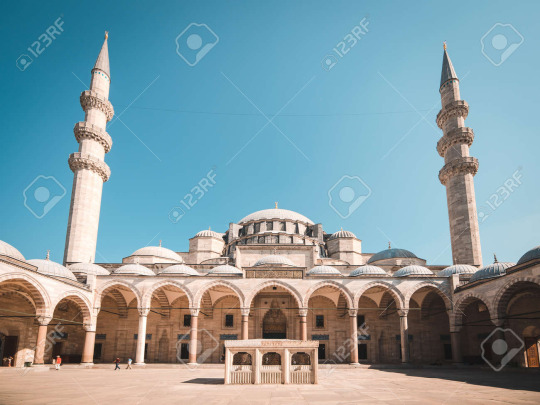
Despite facing various challenges throughout its history, Suleymaniye Mosque has endured and been lovingly restored. The mosque's interior is adorned with intricate Iznik tiles, stained glass windows, and calligraphy, creating a serene and inspiring atmosphere.
The Suleymaniye Mosque complex also includes a library, a school, and the tombs of Sultan Suleiman and his wife, Roxelana. This historical site offers visitors a glimpse into Istanbul's rich heritage.
Plan Your Visit:
Opening hours: 9 AM to 5 PM
Entrance fee: Free
Maiden's Tower: A Romantic Sunset Spot
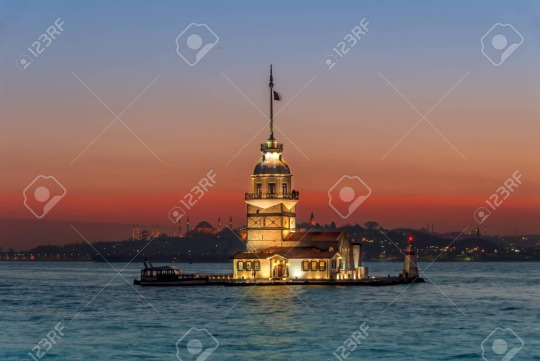
Maiden's Tower is a picturesque landmark on Istanbul's Asian side. It's a popular destination for couples seeking a romantic and unforgettable experience.

A Sunset to Remember:
Watching the sunset from Maiden's Tower is a magical experience. As the sun dips below the horizon, casting a golden glow over the city, you'll be treated to a breathtaking view of the Bosphorus Strait.
Tips for Your Visit:
Arrive early: To secure a good spot, arrive at least an hour before sunset.
Enjoy Turkish tea and pretzels: Enhance your experience by indulging in traditional Turkish tea and pretzels.
Consider the Istanbul Tourist Pass: The pass includes a Maiden's Tower Audio Guide and a two-way boat transfer.
Spice Bazaar: A Sensory Delight

The Spice Bazaar is a vibrant and aromatic destination in Istanbul that offers a unique shopping experience. While it may not be as famous as the Grand Bazaar, it's certainly worth a visit for its unique charm and diverse selection of spices.

A Sensory Overload:
As you wander the Spice Bazaar, you'll be greeted by a symphony of scents and flavours. From the pungent aroma of chilli peppers to the delicate fragrance of saffron, there's something to tantalize every taste bud.
The Spice Bazaar is the perfect place to stock up on authentic Turkish spices. Some popular options include:
Sumac: A tangy spice often used in salads and grilled meats.
Pul Biber: A red pepper flake used to add heat to dishes.
Nar Eksisi: A pomegranate molasses used as a sweetener and flavouring.
Cörek otu: A nigella seed used in bread and pastries.
Saffron: A precious spice known for its vibrant colour and unique flavour.
Whether you're a seasoned cook or simply looking for a unique souvenir, the Spice Bazaar offers a memorable experience.
Topkapi Palace: A Journey Through Ottoman History
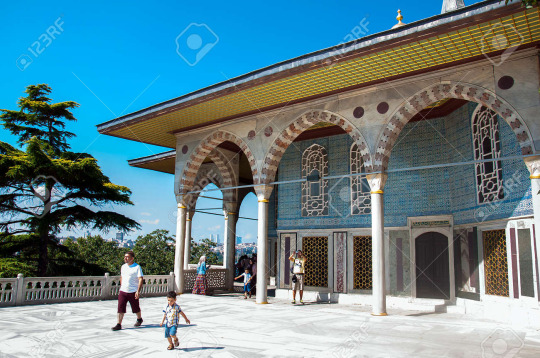
Topkapi Palace is a must-visit destination for anyone exploring Istanbul. This magnificent palace served as the centre of the Ottoman Empire for centuries and offers a fascinating glimpse into the city's royal past.
As you wander through the palace's lavish courtyards and rooms, you'll be transported to an era of unparalleled opulence. Discover the stories of sultans, concubines, and court intrigue that unfolded within these walls.
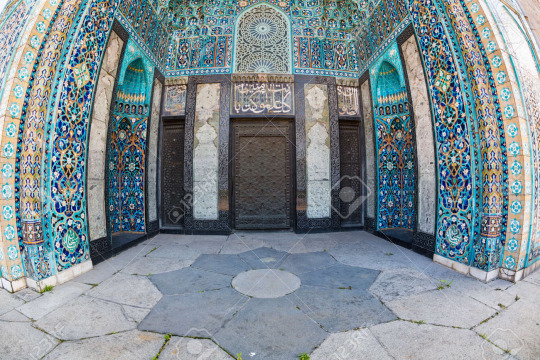
Topkapi Palace houses a vast collection of treasures, including the Prophet Muhammad's cloak and sword, as well as a dazzling array of jewels and artifacts. Explore the Imperial Harem and learn about the private lives of the sultans and their families.
End your visit with a stroll through the palace gardens, where you'll be rewarded with panoramic views of Istanbul.
Plan Your Visit:
Opening hours: 9 AM to 6 PM (closed on Tuesdays)
Entrance fee: 750TRY (includes Hagia Irene Museum and audio guide). Guided Topkapi Palace Museum Tour is also included in the Istanbul Tourist Pass
Rainbow Street: A Vibrant Corner of Karaköy

Rainbow Street, officially known as Hoca Tahsin Street, is a colourful and charming pedestrian street in Istanbul's Karaköy neighbourhood. This vibrant street offers a glimpse into the city's modern and artistic side.
Rainbow Street is known for its colourful facades and trendy atmosphere. It's a great place to explore, soak up the local vibe, and discover hidden gems.
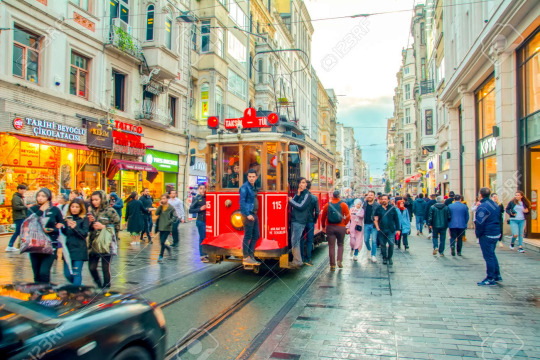
Cafés, Art, and Cuisine:
The street is lined with cafes, art galleries, and restaurants, offering something for everyone. Enjoy a delicious meal, sip coffee, and admire the local art scene.
Enjoy Your Istanbul Adventure!
With careful planning and a little research, you can experience Istanbul's magic on a budget. Whether you're exploring historical landmarks, indulging in delicious cuisine, or simply soaking up the city's vibrant atmosphere, Istanbul will leave a lasting impression.
#travel#travelling#touristpassofistanbul#advantureofIstanbul#placesofIstanbul#Istanbultouristplaces#turkeyIstanbul#istanbul#turkey
0 notes
Text
I find it interesting that Treadgold says quite a few times how useless Italy was to the Byzantines from an economic pov, and that is was very likely a drag on the finances of the empire (and hence, that the loss of the Byzantine possessions there was really no big deal). The latter is understandable, because the few Byzantine footholds remaining in Italy in the 8th century were increasingly difficult to defend and far from a priority when Constantinople was under threat.
But just in general the idea that the former heartland of the Roman Empire had no economic value is still a little surprising to me. Of course even in the Pax Romana period Rome relied on food imports from Egypt and other places to keep itself fed, and my impression (not backed up by any specific reading) is that the eastern provinces of the empire were in general wealthier, more urban, more educated, and more connected to trade routes, so maybe in every way but political Italy was always kind of peripheral in the Mediterranean world of the first millenium BC/first millenium AD? Notwithstanding that Rome itself was a very large city for awhile. Not sure if that's too bold a conclusion to draw from this.
#rome#byzantium#i guess there had also been a LOT of warfare in italy between c. 400 and 800 so that could explain an economic collapse there#but there was a lot of warfare in a lot of places that nevertheless seem more economically important to the byzantines#so idk if that alone can explain it
1 note
·
View note
Link
Check out this listing I just added to my Poshmark closet: 925 Suarti Bali Graduated Square Byzantine Chain.
0 notes
Text
I am actually screaming crying throwing up on my knees gnawing at my fist kicking my feet in the air rn. Whispering what the heck with great affection as I am typing this. This is just so beautiful and majestic, like this is one of the works that make you feel like you have actually been granted the privilege to see our beloved spawn of terror Vlad in his full glory, as he was. The beads of sweat on his forehead, the gritted teeth, the sheer concentration on his face, the mane flying so beautifully behind him— And finally, finally someone takes into consideration that he was young and strong and full of life and energy (instead of that grandpa other artists tend to drift towards) and I thank you endlessly for it! ❤️
An actual live footage of me looking at the art:
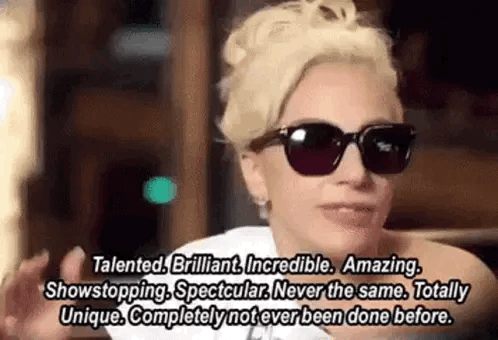
You have also given us a detailed commentary on it and, being the annoying Dracula nerd I am, here I come with... commentary on commentary. Bear with me! ❤️
I actually think in his life Vlad might've taken part in knight tournaments.
Yes, he probably did, though not in the setting one might expect.
When it comes to Wallachian society, they did not have any kind of knight tournaments as seen in Western (particularly those famous in places like France and England) or Central Europe. The chivalric tournaments of jousting, melee combat, and pageantry were a hallmark of Western European knightly culture. The need for knightly culture evolved because these states developed more independent, relatively stable territorial boundaries. Compared to regions such as Wallachia, wars were not as common and frequent, and so the leisure or ceremonial aspects that defined the chivalric traditions of Western knights were needed to boost the spirit and excitement, and maintain the kind of battle-like physicality.
Wallachia (and Moldavia) had a different structure of warfare and social organisation which was influenced by its geographical location and political realities. Wallachia was a buffer zone, so that meant that the priorities of Wallachian society were more focused on survival and military readiness. There was little room for the luxury of tournaments or knightly display because Wallachians had to be constantly prepared for war and defence. The nobility and military elite in Wallachia (but generally in Eastern Europe) more likely engaged in regular practical combat training or ritualistic military displays, so training exercises, hunting expeditions, or mock battles designed to prepare for the harsh realities of war (even in Eastern European period movies, you can usually see scenes of mock battles and duels rather than tournaments). Knighthood in the Western sense was just not a central part of worldview in the Balkans because these men had to be practical, pragmatic, efficient, and seasoned. Besides, Wallachia was an Eastern Orthodox country with cultural ties to the Byzantine Empire and neighbouring Slavic states.
Also, Wallachia was in a constant state of war. Just during Vlad's six-year reign, he showed his military talents and skills here:
invasion of Wallachia, summer 1456
military expedition into Transylvania, winter 1456
military expedition into Transylvania, spring-summer 1457
siege of Bistrița, autumn 1457
conflict with Albu cel Mare, 1458
military expedition into Transylvania, spring 1459
duel between Vlad and Dan, spring 1460
military expedition into Transylvania, summer 1460
second military expedition into Transylvania, summer 1460
conquest of Giurgiu, winter 1462
military expedition into Bulgarian territories, winter 1462
the Ottoman invasion of Wallachia, summer 1462
battle of Chilia (did not fight but organised), summer 1462
local battles between Vlad and Radu, summer-autumn 1462
The only year he did not appear anywhere on a battlefield was in 1461, but that was the year he was preparing for the war with the Ottomans. Many European leaders never faced so many battles, let alone in the relatively short period of six years.
Buuut he most definitely could have tried that at the Hungarian court. Young Vlad spent some time with Hunyadi, he was also formally introduced to King Ladislaus V by Hunyadi himself. I can easily imagine Hunyadi encouraging Vlad to show his talents in a tournament while visiting the court as it would be a good opportunity to present himself and make himself known. I also agree so much with your take on fighting in tournaments while imprisoned, especially later on. Corvinus would also probably want to show that Vlad was still in shape when deciding to make him voivode again.
(Fun fact aside, but his father was raised and spent most of his life at the Hungarian court, so little Vlad would probably hear some stories about the old adventures. He could be familiar with these tournaments. Also, there is this legend that his father received a golden buckle from a noblewoman after winning such a tournament in Nuremberg.)
Does he look too young for you? Remember that he've lead an army attack for the first time when 25 years old! And in Hungary he was through the age of 31-44! Vlad Draculea would in no case look like the withered, aged old man how he's so often depicted as!!
Thank you thank you THANK YOU millions of times, my dearest! ❤️
The teeth:
Here comes the perfect time to indulge you in...
the Ottoman oral hygiene.
He definitely did not have the straight, flashy-white Hollywood smile, but I think he could have taken care of his teeth because he was exposed to it during his hostage days. In my story in particular, I have him naturally adopt certain cultural things and ways of life he is exposed to and grows accustomed to in the Ottoman Empire, simply because he sees the benefit of it, and they become important to his life and identity. The Ottoman stance on and care for personal hygiene (oral hygiene included) is one of the adopted things that he places great importance on.
Traditional methods such as oil pulling and miswak (chewing stick) were common as oral hygiene practices. Herbal treatments such as using sage and myrrh for oral care were also commonly used. The concept of preventive dentistry was greatly emphasised, especially through teachings on the importance of maintaining good oral health through natural remedies and dietary habits. Historical texts from the Ottoman era also provide insights into medieval dental practices. The Ottoman Empire was pretty known for establishing medical schools known as darülfünun, where dentistry was taught as part of the broader medical curriculum. In the 13th and 15th centuries, the Ottoman dentistry even began focusing on issues such as various dental diseases, periodontology, and child dentistry.
Lately I've found that maybe during Vlad's reign, he changed the Wallachian eagle so it would have its wings open
I had no idea about this and I love it so much! I am immediately writing this down. ❤️ Also, the whole design on the caparison is just insanely beautiful and detailed. Let me swoon and admire some more!
So he'd make an absolute unique and rare sight, because he'd have Western armour and Eastern sword.
Yes yes yes! And I find it so cool. Also, I think it also represents him as an individual — he went through certain things in his life, he was exposed to particular cultures, and all of it has left its mark on him and defined him. And that's beautiful to see. ❤️
This is an absolutely masterful and breathtaking piece, and people can see how much love and care went into every line and curve! I might be repeating myself, but every piece of yours just pushes the bar higher and higher. A majestic work of art of a majestic man from a majestic artist. ❤️
I promised you some art, and so I keep my oath!
Here's a piece of mine I have been working on for quite some time.
Vlad as your knight on a horse with shinning armour! Behold!

You'll be surprised that this is actually not from a battle, but rather a knight tournament! (In battle the horse of a voivode would probably be armoured better)
I actually think in his life Vlad might've taken part in knight tournaments (but feel free to correct me if you have better info 😉. Sure, I'll be crying if I find out that I should throw this piece into the trash, but I wanna be historically accurate 😅). You see, I don't think the Ottomans would've trained him in fighting with plate armour. So he'd need to learn that somewhere. That's why I think he might've taken part in some tournaments when he arrived at Bogdan's court at 16 years old.
But maybe he would have a chance even later in life, when he was held by Matthias in Hungary - you see, Matthias kept him in reserve if the Ottomans would attack Hungary, so he'd absolutely want to keep Vlad in fighting condition! And that's what tournaments were actually used for, to practice your battle skills outside of war.
Vlad was a great fighter, what use would it be for Matthias if he lost all his muscles and muscle memory while rotting away in prison? Also it would allow him to get back some prestige after the horrible propaganda dragged his name through mud, which would be profitable for Corvinus too - it would enable to put him on the Wallachian throne or in the lead of an army way quicker should the need arrise.
The complimentary wall of text: Some noteworthy details:

The face:
Physical characteristics I once again based on Modrussa's description and Vlad's seal
However his expression is strained with exercise and focus
Does he look too young for you? Remember that he've lead an army attack for the first time when 25 years old! And in Hungary he was through the age of 31-44! Vlad Draculea would in no case look like the withered, aged old man how he's so often depicted as!!
The sweat:
Yes, Vlad was a warmachine, but he was still a human being, and even such a god of war would sweat when wearing plate armour in the sun and while doing exhausting moves
The teeth:
I have a bad feeling mediaeval person with no access to Collgate wouldn't have pearly white teeth. However there was no coffee, black tea nor tobacco yet, so they wouldn't be yellow either

The horse:
A favourite breed for knight battle horses were the Friesians. I am aware that they probably looked different than today, but since I have no clue HOW different, I settled on drawing the modern one
The coat of arms:
Combination of Draculea's family crest and the coat of arms of Wallachia. Lately I've found that maybe during Vlad's reign, he changed the Wallachian eagle so it would have its wings open, but I have once again no good reference to depict it realistically, so I settled with what I have

The sword:
I think Vlad would still use the Ottoman kilij, since that would always be a weapon he'd be most proficient with (since he had the most time to train with that, and when you're literally fighting for your life in a battle, you don't want to experiment with novelties). So he'd make an absolute unique and rare sight, because he'd have Western armour and Eastern sword.
The missing helmet:
Ah yes, the artistic purpose. I am guilty of that too, because drawing Vlad's face behind the millimetres-wide slit of a jousting helmet is... ehm. But wait, have you ever seen a knight tournament? I highly recommend!!!
(for those less lucky ones - if interested - I might be able to make a short compilation of a tournament I saw of Traken on Karlštejn, they're amazing, I actually started drawing this when I saw them there on the grape harvest festival in September - that's a great historical event as well, with historically accurate costumes 🥰. I recommend!).
If not, then you'd be surprised that it's not full time clashing only! There are many tasks to test your agility, dexterity, and also proficiency in riding a horse - like shooting from a bow, spear throwing, cutting wooden logs with a sword, picking sword from the ground, catching a bracelet with a sword, etc. - and all of that on a horseback in speed! 😳 Fun 😁! And also for these you wouldn't need to wear a helmet.
Disclaimer: this is made on a digital tablet, but it's still painted nonetheless. No photoshop. I did use a photo reference (not for the face, though, that's from imagination only), but I still painted everything from scrap. At the beginning there was a blank canvas.
I know this is probably a totally useless and pointless disclaimer, but it had actually happened to me that I showed people a piece I was sooo effing proud of - another one with armour, I think the best piece I've ever made tbh - and people were like "eh, nice that you drew the face". And I was like "asdfghshdjd@# I also drew the effing armour, it took me weeks!! Why doesn't anyone appreciate that, have you ever tried painting a suit made of metal?!! It took SO MUCH WORK to make it look realistic and not one single person comments on it??!! 😭😭😭
...only to later find out that people didn't think that the armour was painted and not photoshopped 😅😆)
#vlad dracula#this is so beautiful and i hope it receives an endless flood of notes <3#and i am sorry for hijacking your work with the notes! although i hope they help a bit <3#this has me hysterical in the best way possible. what girlies in the 50s must have felt like when seeing elvis live.#and look at how handsome this man is!
27 notes
·
View notes
Link
Check out this listing I just added to my Poshmark closet: Leslie's 14K Gold Byzantine Bracelet.
0 notes
Note
Welp, It nice to see some byzantine empire representation in FGO (And not genderbent at that).
Yeah.
Through Constantine XI is a sobering figure and I would've preferred to see "the" Constantine or Justinian (or even Theodora) first, I *am* glad TM seem to have noticed that the Roman Empire went on for another millennium past the dissolution of its western part.
The event didn't paint him as a villain nor antagonist (at least not from what I've been able to gather?) and TM's take seems to go for a -legitimate, given the existing legends- Arthur/post-Fate Arturia-like figure, both of which are imo good things.
Now all that's left to hope is for a pleasant design and tasteful profile. The profile seems all but guaranteed, the design... I'll try to have low expectations and brace myself.
#obligatory comment of:#remember that the 'byzantine' were roman sofware on greek hardware#and they considered and called themselves 'romanoi' till the very end#answer#this is neither well thought or excited but y know#FGO is also kind of. low on my attention-span priorities rn
12 notes
·
View notes
Photo

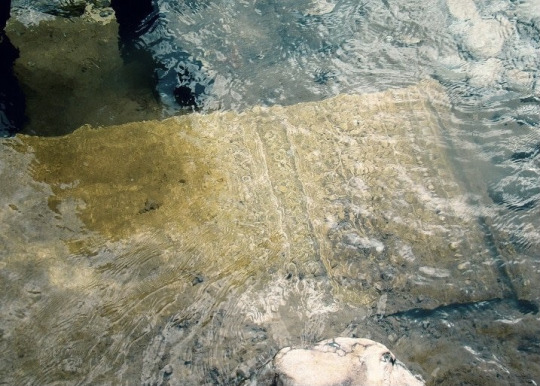

Intact Ancient Tombstone Discovered on Riverbed in Greece
An intact ancient tombstone from the Hellenistic era is the latest discovery of archeologists working along the Arachthos river in Epirus in western Greece.
The heavy object was discovered in the river’s shallow waters, the Ephorate of Antiquities of Arta said in a Facebook announcement on Friday, providing a first glimpse of the rare find on-site before it was transferred to the Archaeological Museum of Arta.
“The river won’t stop pleasantly surprising us, as it reveals burial monuments, architectural parts and movable finds which add to our knowledge about Ambrakia, the ancient city that was developed by its shore, but also about origins in the area during the Byzantine times,” the post reads.
The tombstone’s embossed floral decoration was saved in excellent condition, and one can easily read the inscriptions featuring the names of two deceased citizens, accompanied by their mutual father’s name and national origin.
The announcement explains that the important finding is related to the burial monuments discovered at the same site the previous year.
Discovery traces ancient Greek cemetery
The first findings along the bed of the river were announced in May 2021 at which time archeologists discovered impressive remains of burial monuments from what appears to be an unknown cemetery of the ancient city of Ambrakia.
Using the latest technology, the local Ephorate of Antiquities, in collaboration with other competent authorities, has continued to search the shores for more ancient artifacts.
The aim is to include the findings in a study, which will serve in creating a complete proposal for the appropriate ways to preserve and showcase them.
The river Arachthos is closely linked to the founding and flourishing of the ancient city of Ambrakia in the 7th century B.C., as well as with the Byzantine and contemporary city of Arta.
Hence, the revelation of as many of Arachthos’s secrets as possible remains a high priority for local archeologists.
By Paula Tsoni.
#Intact Ancient Tombstone Discovered on Riverbed in Greece#archeology#archeolgst#ancient artifacts#history#history news#ancient history#ancient culture#ancient civilizations#ancient greece#@greek history
26 notes
·
View notes
Text
I will say that I think fandom perceptions of the "faithfulness" of adaptations such as these are strongly impacted by our own personal fannish priorities.
This is absolutely true, and I freely admit that. I'm very much an elf-focused reader, and my favourite elf is Celeborn - which is probably 95% of why I am disappointed in ROP.
I had some very specific expectations of a series that was set in a time when Celeborn and Galadriel were the rulers of Eriador during the forging of the rings. When Celebrimbor, under Annatar's persuasion, staged a coup against them, leading to Galadriel, and their daughter Celebrian, leaving to settle in Lorien while Celeborn remained behind in Eriador and was therefore on hand to get at least some of the people out when it all went pair shaped.
(There are so many interesting, canon adjacent, things that could be explored with this set up. Galadriel's friendship with the dwarves of Eriador, for example. And Nimrodel in Lothlorien, who was something of a Silvan rights activist. How did she take the arrival of Noldor-related, Sindarin speaking Galadriel in a kingdom which had previously been mainly Silvan?) Argh, I would have written this all so differently!
Which is entirely my fault for writing a bunch of stories about an elf that nobody else likes (and his family and his cultural context)! I do get that. This is what I get for caring about an aspect of the background lore that I don't think the ROP folks even have rights to, but which I find interesting because it's got my fave in.
OTOH, I 100% agree with you about many of the things that annoy you about the movies. The way the ancient friendship between the elves and the Numenorians is reduced to 'Men are weak!' is part of that tone deafness I meant.
And yes, Aragorn was done dirty - he wants to be king! Of course he does. He's been trained to be king all his life, he's got the right and the duty and the skills and he's been proving himself over and over for decades. Him becoming king is a project he's been working toward all his life.
I too was annoyed with the treatment of the Dunedain of Gondor. I actually prefer the Byzantine kind of inspired look they have in ROP. I did love Queen Miriel's outfits very much, and I would have liked to see a more Byzantine or Ancient Egyptian look to them in the movies. (I mean how fascinating and amazing would that have been? It could have been so good!)
At that point I was too annoyed with the Army of the Dead being manifested as cascades of bones and green glowing ghosts, however. The Paths of the Dead part of the book was one of my favourites, and I freely admit that the way the book did it, with nothing at all happening except for everyone getting very very very scared over a long period of time, was probably unfilmable. But still.
Oh and I was also busy being annoyed by the caricature they had made of Denethor! I can't say I ever really liked Denethor, but he was supposed to at least be impressive and powerful and intelligent and you're supposed to mourn his descent into madness, as an example of how a great man was corrupted by the power of Sauron and his own fear and despair.
(I was annoyed with what they'd done to Theoden too. PJ does not know the meaning of subtlety.)
So yeah, if only Celeborn had been in ROP in something close to his canon existence, I would feel better about the whole thing.
I sadly can't deny that ROP brought a whole load of racists out of the woodwork too. That was an eyeopener for me. I hadn't seen it before, because I was a clueless white person when I watched the movies. I hope I have learned a bit since then.
ROP definitely is an improvement on the movies in that respect. Although imo, ROP should have had more characters of colour than it does - more of the named canon characters for example, instead of relegating actors of colour to OCs.
Maybe all the Noldor elves, or all the Sindar could have been elves of colour. In canon, Celeborn/Galadriel is a dark elf/light elf marriage. It would have been great if they had cast it that way.
And also (still banging on about elves, sorry) Tolkien said that the only thing that wasn't gender neutral in elvish society was making lembas. So there should have been so many extra female elves in army and council scenes, both in the movies *and* in ROP. Just there in the background. That could have been done so easily, and it would have made such a difference.
Next time, I guess!
thatinsufferableb-st-rd said:
@anghraine so i have read the books multiple times and am an avid fan of the movies. I enjoy both for what they are. I think the main difference is that Peter Jackson was very open about what they chose to cut and why from anything I've ever seen. They even have Sam give a nod to the book readers by saying "by rights we shouldn't even be here". No I'm not happy about what they did with Faramir and Glorfindel got jipped, and I would have lover to have seen Elronds sons but at the end of the day there were acknowledgments of what and why. Rings of Power to me has always come off as hiding from any criticism by using the shield of "well if you don't like it it's because you don't like POCs in it". To which I genuinely could not give a fuck less, like there are so many branches of elves that went different ways so that could make sense within what Tolkein established. But don't hide behind that when your writing is just "Sauron is evil. We know. And we know she knows. But we have to make it seem like she's the only one who Has A Clue so we must all try to shoo her off to make a plotline"
@lesbiansforboromir has already correctly and politely pointed out that you are doing the very thing we were criticizing in that post—intruding on ROP fan discussion to unfavorably contrast the show to the Peter Jackson films, while also applying a degree of scrutiny to ROP that the Jackson films are rarely subject to in a remotely comparable way and could not bear. Frankly, @lesbiansforboromir is nicer and more restrained than I am about this, but you chose to tag me as well, so I'll also respond.
We (lesbiansforboromir and I) were talking about being excited about costuming in S2 of ROP and disliking the fandom meltdowns over ROP's costuming looking (somewhat) different from the films' aesthetic. Since it had already come up in their discussion, I added that I'm not convinced by the anti-ROP contingent framing their seething hatred of the costuming and design as just caring so much about fidelity to Tolkien's vision. I pointed out that Tolkien fandom broadly cares far more about their preferred, film-influenced aesthetics than Tolkien's actual descriptions and gave some specific examples of this.
There's been a lot of talk, for instance, about how the universally long, flowing hair for Elves preferred by the fandom and used in the films is actually totally canon according to Tolkien even if it's rarely mentioned in LOTR proper. This is inaccurate. Galadriel's brother Aegnor is typically depicted in the fandom/film-preferred style rather than per Tolkien's description of his hair as "strong and stiff, rising upon his head like flames" (indeed, in general neither Aegnor nor anyone else is ever depicted this way, and this description rarely shows up in the lists of "no it's about ethics in adaptation" Tolkien hair quotes).
Tolkien repeatedly describes Elvish, peredhel, and Dúnadan women as wearing their hair bound up in braided coiffures with jeweled hair pieces/nets rather than loose and flowing à la the films and the fandom. Nobody cares, any more than they care about Tolkien's description of Arwen's clothing as soft, grey, and noticeably devoid of ornamentation apart from a belt and netted cap (i.e. the opposite of her highly elaborate film costuming and typically loose, unbound, uncovered hair in the films and most illustrations).
Meanwhile, my fave Faramir's hair is nowhere near long enough in the films or most art to mingle with Éowyn's as Tolkien describes. It's usually also depicted as blond, reddish, or brown rather than black as in the book; in Tolkien's LOTR, all described Gondorians have dark or black hair, with the only difference in coloring being that some Gondorians are dark-skinned and some are pale. Again, almost nobody in the fandom cares about this when they're going on about costume design and casting to reflect Tolkien's vision, and male Gondorians are overwhelmingly depicted with short or shoulder-length hair in the films and in Tolkien illustrations.
Popular depictions of Gondor, including the Gondor of the films, very rarely reflect Tolkien's description of Gondor's aesthetic as similar to ancient Egypt, the Byzantine Empire, and the Roman Empire. Film Gondor has, at most, extremely vague allusions to Byzantine architecture amidst the general and deliberate westernization of Gondor's design—as just one example among many, Tolkien's explicitly Egyptian-based design for the royal crown of Gondor is converted to a generically western European-style crown in the films and overwhelmingly in the fandom.
I then pointed out that it's been very noticeable that ROP haters tend to have a powerful double standard wrt fidelity when it comes to the Jackson films. For over 20 years, most film fans have been constitutionally incapable of tolerating even slight criticism of the films without jumping in to defend their greatness and condescendingly explain the most basic elements of adaptation. (Yes, we know film is not the same as text, we know changes are part of adaptation, we all know that, we all know that a word-for-word adaptation would suck and never be made, this is not new information and does not make the PJ films' every choice a good one.) Yet most film LOTR fans who vocally despise ROP display none of the charity towards ROP that they demand for the films (demand even from someone like Christopher Tolkien, a dead man the entire fandom is deeply indebted to, whose dislike of the films still leads to regular attacks on his character from Jackson film stans).
This hypercritical yet hyperdefensive tendency in the fandom is neatly illustrated by the fact that you responded to a conversation about the double standards in evaluations of ROP's costuming vs the films' to go on about how ROP is objectively bad for reasons entirely unrelated to costuming, how you're totally not racist (something nobody was talking about), and to quote you directly, "Like the show was just Bad." Truly, an incisive critique. Meanwhile, your concessions with regard to the Jackson films are mainly about extremely minor and defensible omissions like removing Glorfindel and the sons of Elrond rather than the serious and fundamental problems that lesbiansforboromir and I have with them, or even the ways they do pretty much the exact same things you're lambasting ROP for.
I mean, if we're going to talk about action hero Elves in ROP vs the Jackson films, what about the action hero-ification of Legolas in the films? He was described by Tolkien himself as the Fellowship member who accomplished the least, so super badass battle-skateboarding Legolas hardly represents fidelity to Tolkien's vision. Why should that get a pass while film-stanning ROP haters seethe about ROP!Galadriel being too special, even though Tolkien described her as one of the most special Elves to ever live and specifically as remarkably athletic and insightful?
Meanwhile, film Gimli is reduced to comic relief, the only dwarves taken seriously are conventionally hot ones in The Hobbit films, and Frodo's expressions of strength and fortitude are consistently removed to glorify other characters. Film Gondorians were deliberately designed to seem like useless tin soldiers (which they are in the films, as well as whiter and blonder than Tolkien wrote them) rather than the physically imposing and highly effective fighting force of the book. ROP imagining Elvish rituals upon approaching Valinor that aren't based in Tolkien canon but don't directly conflict with it is absolutely trivial compared to the films' handling of Denethor and Faramir.
The point is not that you, personally, are not allowed to like the films or dislike ROP despite all this. Many people do love the films, including most of my followers. They do have their strengths, though they are extremely racist and few film fans will acknowledge this without soft-pedaling it in some way (esp, since you brought it up, given the context of the truly unhinged degree of racism that has accompanied much of the broader discourse around ROP).
The point is that film fans who hate ROP are constantly showing up in our conversations to be "well actually ROP is just objectively bad, unlike the films, because the show has failings that are also in the films but it's totally different there because of the contents of Peter Jackson's soul" or whatever. The point is the absolutely glaring and obnoxiously hypocritical double standard of defensiveness about the films and obsessive nitpicking of ROP that leads to ROP haters continually going on rants to ROP fans that are unwelcome, uninvited, and usually (as in this case) irrelevant to what was even being discussed.
117 notes
·
View notes